Some geometric legerdemain by Argentine magician Norberto Jansenson. (Thanks, Ron.)
Entertainment
Fundamental Things Apply
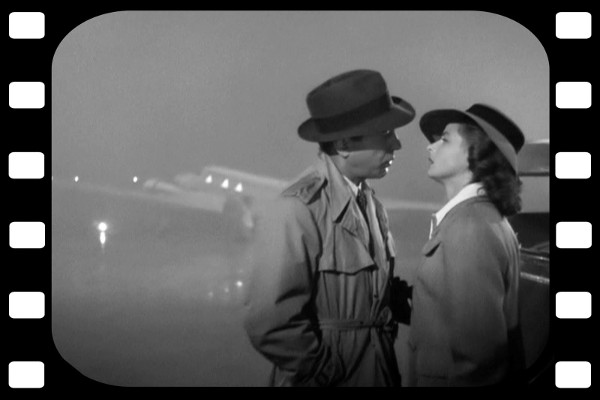
In the final scene of Casablanca, the airplane is made of plywood. The film was shot shortly after the Japanese attacked Pearl Harbor, and California was bracing for a new attack, so movie studios were severely restricted from shooting on location and forbidden entirely from filming at airports. So the movie was shot on soundstages at the Warner Bros. studios in Burbank, and Soundstage #1, as it turned out, was too small to accommodate a real airplane.
So prop men built a half-size Lockheed Electra 12A out of plywood and balsa, and little people in jumpsuits were hired to bustle around it. The fog — a rarity in Morocco — helped to sell the effect.
Also: Dooley Wilson was an accomplished singer, but he couldn’t play the piano. “During the filming of Casablanca, a Warners staff musician, Elliott Carpenter, played the piano to the side of the set so that Wilson could get his bearings,” writes Jeff Siegel in The Casablanca Companion. “It’s also Carpenter’s playing that was dubbed into the film. The charade went off so well that when Wilson appeared for a nightclub gig after the movie was released, the club’s manager asked him why he wasn’t going to play the piano in his act.”
The Agony Column
In the summer of 1977, a disconcerting series of personal advertisements began appearing in the London Times:
DR. MOREAU requires lab. assistant. Experience not necessary. Strong stomach.
DR. MOREAU seeks Harley St. offices. Soundproofing essential.
HEART OF BABOON, eye of newt and other spare parts required by Dr. Moreau.
QUESTION for Dr. Moreau: What do you do with the leftovers?
WERE YOU cut out to be a patient of Dr. Moreau?
DON’T MAKE a pig of yourself without consulting Dr. Moreau.
DR. MOREAU will have you in stitches.
DR. MOREAU goes in one ear and out the other.
I’M JUST WILD about Dr. Moreau. He has so much animal magnetism.
IF YOU WANT TO GET AHEAD see Dr. Moreau.
OVERWEIGHT? Dr. Moreau will cut you down to size.
ARE YOU A MAN – or a mouse? Get an expert opinion from Dr. Moreau.
DR. MOREAU made a monkey out of me. See what he can do for you.
LEND a hand to Dr. Moreau and you’ll never get it back.
DR. MOREAU does brain transplants while you wait.
UNFORTUNATELY Dr. Moreau’s services are not available on the National Health.
DR. MOREAU is coming soon. Can’t you feel it in your bones?
The last one appeared on Sept. 3. American International Pictures’ production of The Island of Dr. Moreau, starring Burt Lancaster and Michael York, opened later that month.
(From Peter Haining, The H.G. Wells Scrapbook, 1978.)
Eavesdropping

“It is highly desirable for the spectators at a baseball game to hear what is transpiring on the playing field,” observed inventor James Sellers in 1959, “such as arguments at the bases between opposing players, and discussions between the umpires and players.”
Accordingly he patented an “apparatus for transmitting sound from a baseball field.” Each base is fitted with a hidden microphone, which sends its signal to the announcers’ PA system.
“The sounds on the playing field can thus be transmitted through the control booth to the public address system so that spectators in the grandstand may hear what is taking place on the playing field.”
“By transmitting the sounds from the playing field to the grandstand, the spectators feel that they are taking part in the game. Also, it enables the spectators to judge a play better as they can hear the baseball strike the glove or mitt of a player.”
Brotherly Harmony
In the backing vocals on “Paperback Writer” (1:02 above), John and George are singing “Frère Jacques.”
Reverses
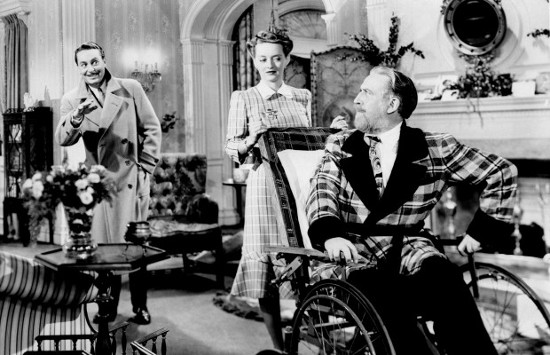
You never laugh at anything nice. A comedy that ends with a laugh is a comedy that ends not with a solution but with a fresh disaster. At the end of Gogol’s The Government Inspector the real government inspector arrives; the trouble is just beginning. At the end of George F. Kaufman and Moss Hart’s Broadway comedy The Man Who Came to Dinner, the eccentric Sheridan Whiteside, who has wrought havoc in the lives of the Middle American family in whose home he is stranded by a broken ankle, walks out the door to universal relief, slips on the front step, and breaks his ankle again. According to Arthur Koestler, laughter does not truly release tension because it does not solve the problem; it fritters away energy in purposeless physical reflexes that make action impossible. Laughter is not a solution, it is a sign of the problem. As a number of writers have observed, there is a built-in contradiction between comedy’s two purposes, laughter and the happy ending. In its normal operation [the reaching of a happy ending] the function of comedy is to make the audience stop laughing.
— Alexander Leggatt, English Stage Comedy 1490-1990, 2002
The Masked Marauders
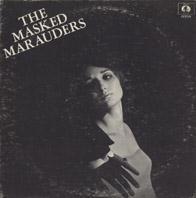
In 1969, as a joke, Rolling Stone published a review of a nonexistent album by a nonexistent band, a supposed “supergroup” made up of John Lennon, Paul McCartney, Mick Jagger, and Bob Dylan. Editor Greil Marcus had intended this as a self-evident parody of groups like Blind Faith and Crosby, Stills, Nash & Young, but readers began clamoring for the album. So Marcus and editor Langdon Winner recruited a Berkeley skiffle band and retroactively recorded a few of the songs that had been mentioned in the review.
When California radio stations began to play these songs, the hoax took on a life of its own. Marcus began to shop the band to major labels, and Warner Bros. won the contract with a $15,000 advance. The Masked Marauders came out that November with liner notes making it clear that the whole thing was a joke. Nonetheless, on the strength of its own bootstrapped glamor the record sold 100,000 copies and spent 12 weeks on the Billboard charts.
Related: In 2004 Dave Stewart and Kara DioGuardi invented a band called Platinum Weird that they insisted had existed in 1974. Supposedly it had been a partnership between Stewart and a mysterious singer/songwriter named Erin Grace who, among other accomplishments, had introduced Stevie Nicks to Lindsey Buckingham. In July 2006 VH1 even aired a documentary in which Ringo Starr, Bob Geldof, Elton John, and Mick Jagger pretended to reminisce about the band. On the same day, though, Stewart admitted to the Los Angeles Times that the whole thing had been a hoax.
“Lots of artists from the ’60s created mythology about themselves,” he said. “We’re in our own perception of our own world. So what’s reality and what’s not?”
(Thanks, Jeremy.)
Rehearsal
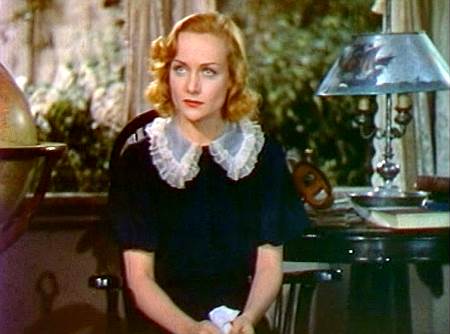
In 1940, just before the release of her film They Knew What They Wanted, Carole Lombard’s press agent, Russell Birdwell, approached the filmmakers with a novel publicity scheme. Lombard would be scheduled to fly to New York for the opening, but they would arrange for the plane to “go down” en route and remain missing for 12 hours.
“And in those twelve hours, fellas, we’re going to be on every goddam front page in the United States of America,” Birdwell said. “Not only Carole Lombard’s name, but the name of the picture and the name of the theatre it’s going to open at and how would you like to foot the bill for that kind of advertising?” He planned that eventually Lombard and the pilot could wander out of the woods saying that the plane’s engines and radio had died.
In his 1967 memoir Hollywood, director Garson Kanin remembers that in the meeting Lombard began to slap her thigh, yelling, “I’ll die! I’ll die! Isn’t that something? I’ll die!”
Birdwell’s plan was considered seriously but finally canceled due to the cost. Two years later, Lombard died in a plane crash in Nevada. “I could hear Carole’s voice and the sound of her hand slapping her thigh, her voice yelling delightedly, ‘I’ll die! I’ll die!'” Kanin wrote. “I remembered Russell Birdwell’s notion of the fake crash for publicity. I stood there hoping against hope that perhaps this was a postponed version of his scheme. … Carole Lombard … could not be dead at thirty-five. But she was.”
(Thanks, Ted.)
Batter Up!
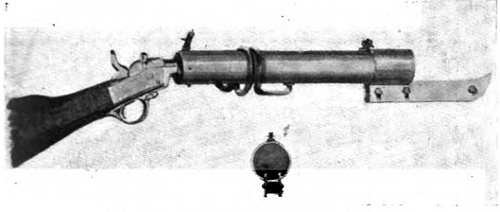
The first pitching machine was powered by gunpowder. Princeton mathematician Charles Hinton designed it for the school baseball team in 1897, hoping to spare human pitchers whose arms were giving out under the incessant demands of batting practice. At first he planned a catapult, but he found this too inaccurate. Then “it occurred to me that practically whenever men wished to impel a ball with velocity and precision, they drove it out of a tube with powder.”
The result, which he wrote up in Harper’s Weekly on March 20, was a shoulder-mounted cannon whose 4-foot barrel could send a ball across the home plate at 70 mph. With a fingerlike attachment it could even throw a curveball. That summer it pitched three innings in a game between two Princeton social clubs, allowing four hits, striking out eight batters, walking one, and throwing only one wild pitch.
The Washington Post predicted the end of the world (“There would be the base-burning, high-pressure, anti-friction catcher, and the shortstop made of aluminium and rivets and filled with cogs, cams, valves, shafts, and belting”), but Hinton praised the gun’s handiness: “It can be used so as to deliver ball after ball at the same speed in the same curve, or it can be varied from shot to shot, according to the wish or skill of the manipulator.” He took it with him to the University of Minnesota, where he worked until 1900.
All Roads
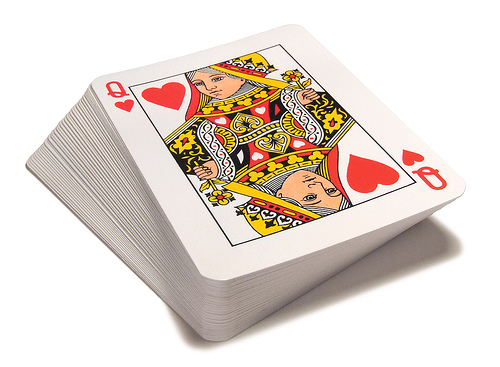
A self-working card trick by New York magician Henry Christ:
Shuffle a deck thoroughly and deal out nine cards in a row, face down. Choose a card, look at it, and assemble the nine cards into a stack face down, with the chosen card at the top. Add this stack to the bottom of the deck.
Now deal cards one at a time from the top of the deck into a pile, face up, counting backward from 10 as you do so. If at some point the card’s rank matches the number said, then begin dealing into a new pile at that point, counting again backward from 10. If you reach 1 without a match occurring, then “close” that pile by dealing a face-down card onto it, and start a new pile.
Keep this up until you’ve created four piles. Now add the values of any face-up cards on top of the piles, count down through the remaining cards until you’ve reached this position, and you’ll find your chosen card.
This works because it always leads to the 44th card in the deck, but it takes some thinking to see this. You can put a sealed deck into a stranger’s hands and direct him to perform the trick himself, with mystifying results.
